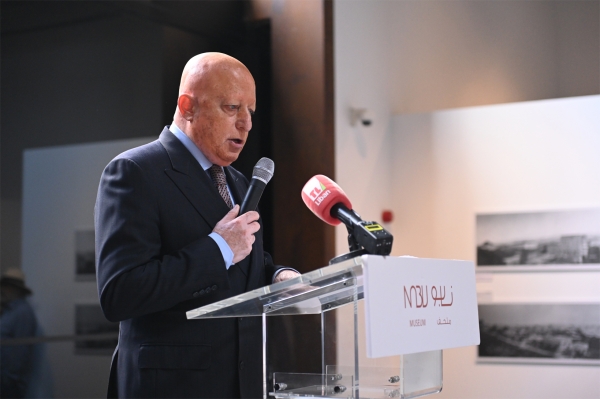Jeunesse Contre Drogue
As it expanded and evolved, the name was later changed to Jeunesse Contre Drogue or JCD. Since his university days as a student of law and political science, Mr. Lahoud had always been an activist involved in several organizations and volunteering activities. Now, he is primarily dedicated to his work with JCD.
At first, JCD started off with only five people who worked within the rehabilitation center of Haret Sakher. Thus, the organization’s management and the rehabilitation center were operated from the same premises. Eventually, the organization expanded to include over forty people. At this point it moved to a separate venue where until today it operates from. JCD still offers its addiction rehabilitation services from the rehabilitation center in Haret Sakher and two other locations.
Centers
Two of JCD’s centers offer in-patient services while the third is an outpatient facility. Nine to twenty-two addicts are currently hosted at the Haret Sakher center, where they receive a one-month rest period between their hospital detoxification and the rehabilitation program. At the end of their preparatory period, they move to the center of Saint Theresa of Jesus the Child in Jourt El-Tormous where they undergo rehabilitation, before returning to Haret Sakher to receive their last phase of treatment: the reintegration phase. After their treatment, patients receive periodical follow-ups at JCD’s outpatient center in Chiyyah.
It is worth mentioning that before they begin the formal treatment program, patients need to attend several meetings and receive counseling at the Counseling and Admissions Office. This is an important phase since it lays the foundation for treatment and helps estimate whether or not the patients have both the motivation and the willingness to enter the program. The programs vary in length depending on how responsive the patients are.
Community Outreach
A lot of the time, patients hear of the organization through their friends who have received treatment. Sometimes, they find out about JCD online through the website or other media outlets. Some patients are referred to JCD from other organizations or are directed there by their parents to receive treatment.
The Rehabilitation Team
JCD’s team is made up of educators, psychotherapists, social workers, and teachers. Educators are constantly with patients. There are also psychotherapists who provide both group and individual therapy. Sports activities, spiritual meetings, drama, music and drawing therapy, hand crafts, reading, movies interpretations, English and computer classes are all part of activities delivered as part of the rehabilitation program, in addition to recreational and entertainment activities.
Most of JCD’s staff are paid employees in addition to volunteers who play an essential role in the treatment programs.
Demographic Background of Beneficiaries
JCD is tailored specifically for male addicts. A few girls approach the organization for counseling services. However, the centers are currently made to accommodate males only as there is a much higher demand for male rehabilitation services. Thus, they dedicate their funds and efforts towards that demand. “If we find that there is a growing demand for female rehabilitations services, we may consider expanding to treat girls as well,” says Nadine Najjar, Head of Communication & Media department at JCD.
Right now, most of the beneficiaries are eighteen years old. However, in the past year JCD treated approximately four patients who were younger than eighteen years. Addicts usually seek rehabilitation services, around six years after beginning to use drugs. So, if a patient is eighteen years old, he has most likely started using drugs at the age of twelve. Sometimes there are patients who are older than thirty or even fifty. However, JCD’s programs are not optimized for that age group and such patients are not admitted unless they can potentially benefit from the offered services.
Patients come from diverse socio-economic backgrounds. The organization sees patients from those have attended some of the best universities in Lebanon to those who may not have even completed the Brevet program or are illiterate. JCD also accommodates patients from the richest families to those who live in extreme poverty. Drug addiction can affect anyone, regardless of economic and social status, or level of education. During their treatment, patients are isolated from society and from their friends. Therefore, they develop very close ties with each other and care for each other. Patients rarely discuss political affiliations or religious divisions; instead, they live amongst each other as brothers.
Post-Treatment Obstacles
“It is said addiction cannot be “cured” fully. The likelihood of relapse is high and this is why we seek to dissociate our patients from dangerous situations or tempting circumstances that remind them of previous drug use”, says Nadine Najjar, Head of Communication & Media department at JCD.
Patients are provided with relevant tools to cope with such situations during the post-treatment follow-up program. Unfortunately, stigma around drug addiction still exists in our society. At times, recovering addicts have lost their jobs despite having excelled at those jobs solely because they had previously been addicts. In the face of such discrimination, the follow-up program helps remind patients that they are able to achieve success and lead a normal life in society.
JCD has launched several campaigns to raise awareness about drug addiction. As a part of this campaign, the organization trains activists to spread its message and educate people about drug addiction in different areas of Lebanon. In turn, these people can conduct workshops and spread awareness in their area. Sometimes, training is offered in schools or universities and even among the Lebanese Scouts.
Trends in Drug Addiction and Obstacles towards Raising Awareness
In terms of statistics, since its establishment, JCD has observed a decrease in the incidence of drug addiction. However, within the last four years, there has been a staggering increase in the numbers of those taking drugs and an unfortunate decrease in the age of onset. “Although several schools allow us to conduct awareness workshops and sessions, an annual one-hour long session is not enough to raise awareness about drug addiction. We need to do more than that. Awareness is about instilling strong coping skills within the youth,” notes Nadine Najjar.
Another issue is that, on a national level, there is no solid strategy put in place to combat drug addiction. Although all organizations work with the government, a lack of a common purposeful plan makes it difficult to fight this vice and raise awareness on a national level. Furthermore, it is hard to know exactly how many and how well prevention programs have been executed.
Financing
The JCD telemarketing department brings in around 20,000 friends and donors who donate to the organization regularly to cover salaries and overheads. Some donors pay fixed amounts; others have the flexibility to give more or less than the fixed amount depending on their financial capabilities. JCD receives large sums from some personal donors. In addition, it has a contract with the Ministry of Social Affairs, which provides nominal, yet symbolic, financial support to the organization.

1.bmp)






Leave A Comment